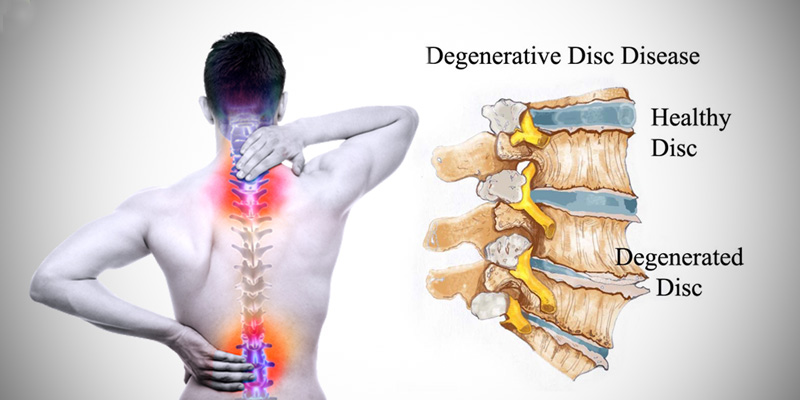- drmanojgaddikeri@gmail.com
- Wockhardt Hospital, Mira Road
- For Appointments Call: +91-22-40543000

As we age, our body goes through many changes, and one area that can be significantly affected is the spine. One common condition that many people experience as they grow older is degenerative disc disease. Despite its name, this isn’t technically a disease but rather a condition where damaged spinal discs cause pain and discomfort. While nearly everyone will show some signs of wear in their spinal discs over time, not everyone will experience pain or other symptoms related to degenerative changes.
What Are Spinal Discs?
To understand degenerative disc disease, it’s important to first know what spinal discs do. Spinal discs are the shock absorbers between the bones of the spine (vertebrae). They help the back stay flexible while also protecting the spine from the forces we place on it during daily activities.
Each disc has two parts:
Because spinal discs have very low blood supply, they do not heal well on their own. Once a disc is injured, it can begin a process of degeneration that may continue for decades. This degeneration typically happens in three stages:
Treatment for Degenerative Conditions
While degenerative disc disease can be a challenging condition, there are effective treatment options available. For many people, conservative treatments like physical therapy, medications, and lifestyle changes can help manage symptoms and improve mobility. In cases where pain is severe and persistent, more advanced treatments like epidural injections or even surgery may be considered.
Suppose you’re experiencing back pain and suspect a degenerative condition. In that case, Dr. Manojkumar Gaddikeri, a skilled orthopaedic spine surgeon, can guide you through personalized treatment options to help you feel better and maintain your quality of life.